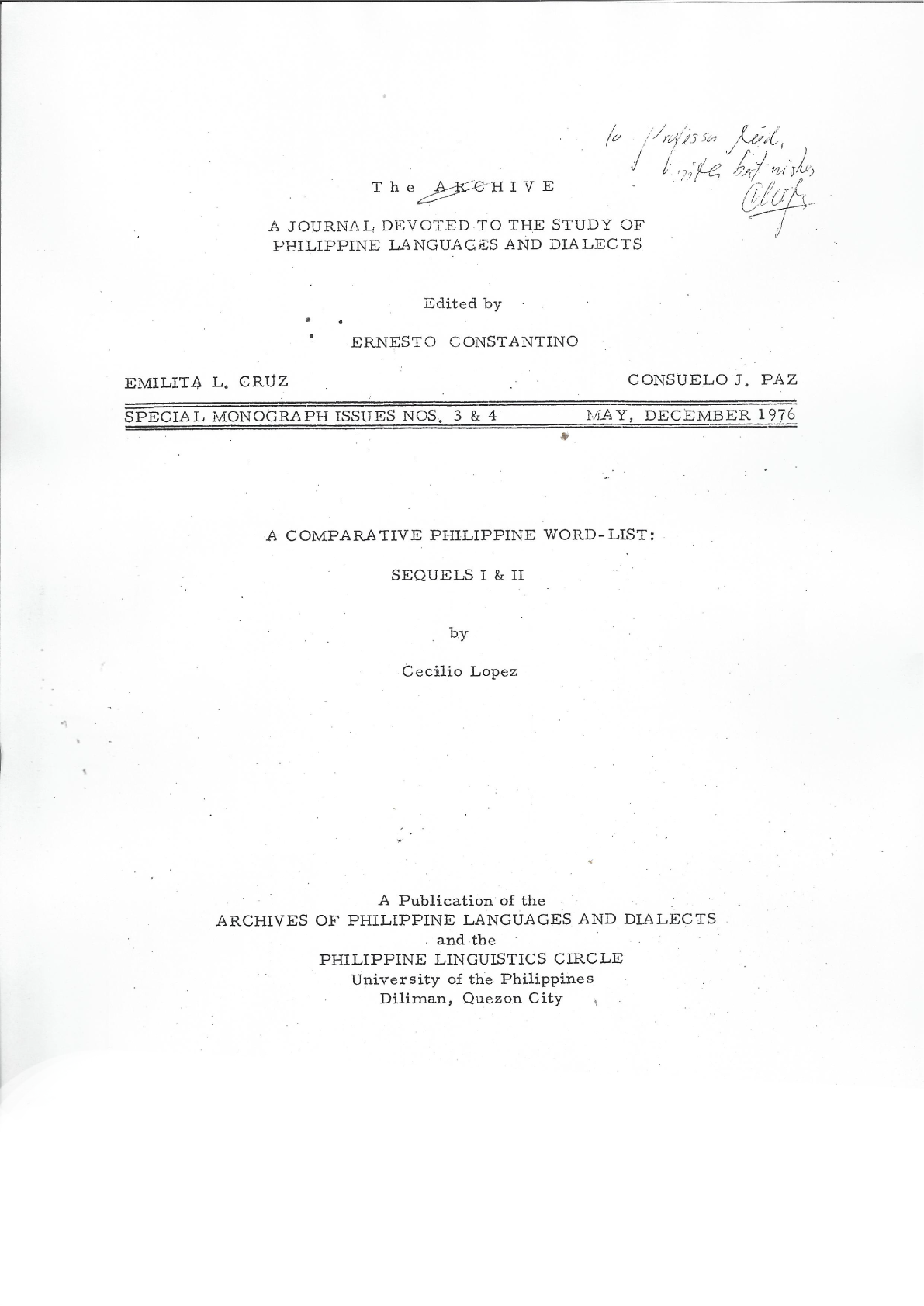A Comparative Philippine Word-list: Sequel I
Abstract
This introduction supplements and amends in certain aspects the introduction to A Comparative Philippine Word-List, The ARCHIVE, Special Monograph Issue No. 1 (AR-SMI-1), February 1974, edited by Ernesto Constantino. The background for the preparation of AR-SMI-1 is stated in the Foreword, although the more compelling reason is not explicitly mentioned, and that is, to contribute to the cause of the Philippine national language. That is the principal reason why Tagalog, the basis of the national language, is the lead language in AR-SMI-1. The foreign delegates to the Eighth Pacific Science Congress which was held at the University of the Philippines in 1953 who saw copies of the word-list were not happy about this order of priority. And it was Richard Pittman and Howard P. McKaughan who, on more than one occasion, suggested that it would be more useful and practical, especially to foreign linguists, if the lead language is changed to English. I realized then and there the wisdom of the suggestion. And it was also Pittman who suggested that the English guide words be marked, say, with an asterisk if the Philippine cognates for the English words are reflexes of PAN. Like for example, *accompany; conduct; escort; Tagalog hatíd, Sebu, Hiligaynon, Bikol, Leyte-Samar hatúd, Pampangan yatad, Magindanao, Sulu hatud. So, in spite of the demands of several concurrent administrative jobs, in addition to teaching, I undertook the preparation of another word-list with the guide words in English. The preparation I could do only perfunctorily, and by 1957 I had to give up the idea of adding more languages and words. By coincidence, when Fred Eggan, in one of his periodic visits, came back to the Philippines after the Ninth Pacific Science Congress held in Bangkok in 1957, he thought I had “enough” after having seen the word-list. The AR-SMI-1 contains 2,236 items, this new word-list 2,950, out of which I select only the asterisked ones for this sequel leaving out the rest which may be worked out later as another sequel leading to the construction of Proto-Philippine.


